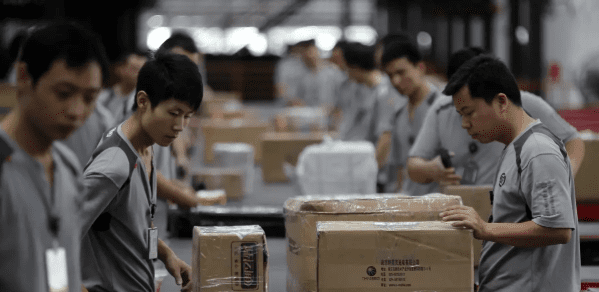With the stakes of Amazon selling high, with one inventory misstep potentially losing your sales by half and spending weeks to recuperate lost rankings, an increasing number of sellers are considering China fulfillment warehouses to keep your inventory flowing smoothly. These warehouses, using the fast replenishment of China, reduced lead times that took months to only a few weeks and this has significantly minimized the chances of Amazon FBA stockouts. Geographic location to manufacturers enables the ability to replenish stock at will, and the low-cost storage services in China prevent the need to strain the bank account to maintain safety stock and, within China, the presence of specialized FBA prep services in China guarantees the products arrive at Amazon warehouses in a compliant and ready state. This supply chain strategic change improves not only eCommerce supply chain but also enables sellers to strategize on growth instead of fighting with blankets of inventory.
Core Reasons Chinese Warehouses Excel at Preventing FBA Stockouts
The mechanics of Amazon FBA stockouts often stem from delayed replenishments, unpredictable demand spikes, and rigid Western logistics. Chinese warehouses address these head-on with efficiency born from scale and integration. Here’s how:
1. Faster Replenishment Cycles When Inventory Stays in China
Conventional replenishment can take 30-60 days to arrive, particularly when ocean freight is clogged because of peak seasons such as Q4. This is cut to 7-14 days to replenish Amazon China warehouse inventory to serve eCommerce, and then 8-10 days airfreight to the US FBA centers. Such a quick cycle avoids the feared out of stock situation that can lose organic position by 5-15 positions and take 3-4 weeks to recover. As an example, sellers who utilize cross-border inventory management in Shenzhen hubs may follow real-time sales data and automatically initiate restocks instead of losing millions in revenue every day in stockouts (i.e. 1000+ a day).
2. Being Close to Manufacturers Enables Immediate Restocking
China manufactures more than 70 percent of consumer goods in the world and as such, China fulfillment warehouse locations will be the best option to location of just-in-time inventory. Proximity implies that defects identified in the course of inspections could be fixed at factories within the same day, whether it is through repacking, relabelling or fixing, which would otherwise take weeks to be processed back in the US. The arrangement also aids low-inventory risk management since it allows sellers to maintain buffer stock locally and order in batches of goods which are flexible to ship locally and which do not require expensive FBA space to maintain.
3. FBA Prep Services in China Help Products Enter Amazon Faster
FBA prep services in China are used to simplify compliance, with all FNSKU labeling, polybagging, and bundling and carton bringing. These services include pre-shipment checks to determine the problems in advance and decreased by 80 percent of refusals at Amazon warehouses. In contrast to US prep centers, where a labor charge causes a mark-up, Chinese providers will charge these at twenty-five to fifty per cent less, fastening access into FBA and decreasing the delays due to mistakes such as improper labeling. The result? Products are delivered faster to customers, improving the seller metrics, and avoiding inventory declines during times of high demand such as Prime Day.
4. Lower Storage Costs Allow Sellers to Hold Safety Stock in China
The FBA storage charges in the US can reach highs of 2.40 per cubic foot per month with long term surcharges topping it off. Conversely, save Amazon storage cost by working with Chinese 3PL on behalf of Amazon sellers, it costs between 5-15 per CBM (approximately 0.14-0.42 per cubic foot) meaning that safety stock can be held without cutting margins. This cost-effectiveness allows sellers to implement FBA restocking strategyto guard against demand variations, having 20-30 percent of additional inventory stored on the shelf, and shipping in response to demand, saving both 50-70 percent of the overall costs of all-in FBA dependency.
5. Flexible Batch Shipping to Avoid Overstocks or Understocks
China-based order fulfillment excels in small-batch shipments, allowing sellers to calculate replenishment windows based on real-time sales velocity. For example, instead of bulk ocean hauls risking overstock fees, air or express options deliver 500-1,000 units in 8-10 days, aligning with Amazon’s algorithms that penalize excess inventory. This agility in eCommerce supply chain optimization helps adjust for seasonal spikes, preventing both understocks (lost sales) and overstocks (storage penalties), with many 3PLs offering API integrations for automated triggers.
Supporting Details: Trends and Data Backing the Shift
The emergence of Chinese warehouses is in line with the wider eCommerce trends. The world cross-border sales are expected to reach 2.5 trillion by 2026 due to the rise of Amazon dominance in the market where more than half of the active sellers are currently located in China, using local logistics as a competitive advantage. The backlog of the US FBA warehouses is chronic, and the check-in times extend to 1.5 weeks and 5 months in case of peak periods, which worsens Amazon FBA stockouts. During Q4 and Prime Day, replenishment delays can increase 2 times, albeit faster replenishment fromChina counters it through diversified shipping.
Chinese 3PLs are on a boom with more than 60 percent of them implementing modern WMS and API real time tracking to enhance inventory turnover of 6-8 times a year compared to 4-5 in the West. This technology integration assists in anticipating inventory out of stock by forecasting with the help of AI, which is a necessity among sellers who will be subjected to increasingly strict regulations by FBA by 2025, such as higher fees and the low inventory surcharge. The statistics provided by vendors indicate that the outsourcing to China reduces supply chain lead times by 40 and leads to an increase in efficiency.
| Metric | US/EU FBA Trend | China Warehouse Advantage |
| Storage Cost | $0.78-2.40/cu ft | $0.14-0.42/cu ft |
| Replenishment Time | 30-60 days | 7-20 days |
| Inventory Turnover | 4-5x/year | 6-8x/year |
| Stockout Recovery | 3-4 weeks | 1-2 weeks |
Deep Expert-Level Analysis: Beyond the Basics
As an example, we will have a vintage replenishment flow: Supplier moves to US port (20-30 days at sea), clears custom (3-7 days), trucks to prep center (2-5 days), and FBA (1-2 weeks check-in). Total: 30-60 days, disruptions are ready. It has a China fulfillment warehouse, meaning that the loop is closed locally: Factory to warehouse (1-3 days), prep and label (1-2 days), air/ sea to FBA (8-30 days). This cuts down exposure to delays by half.
The pain points related to sellers, such as the inaccuracy of demand forecasts (30% of stockouts), are resolved through Chinese 3PL of Amazon sellers to include buffer stock (additional 10-20% inventory) and rolling replenishments (unceasingly smaller shipments). Integrated systems can provide real-time data that allows successful forecasting and minimize risks with volatile categories such as electronics.
China has lower labor costs (30-50% saving) to make it convenient in case of need to re-label and re-pack and still have compliance without downtime, which makes it best suited to custom kitting. Diversified China-based strategies would also be resistant in case of a situation such as the increase in tariffs or port strikes, which occurred in 2025 with the US-China trade halts alleviating the financial burden.
Challenges and How to Choose the Right China Warehouse
There are no obstacles to using China warehouse for eCommerce. The difference in time zone (12-15 hours) may slow the communication, but it is addressed by the 24/7 application, such as WeChat and bilingual managers. The transportation options- express (3-9 days, more expensive), air (8-10 days) or sea (20-30 days) imply the trade-off between the speed and money allocation; to manage the customs, it is better to use DDP shipping. Compliance risks such as tariffs, VAT require partners who understand the HTS codes.
When selecting, prioritize warehouses with robust WMS for 99% accuracy, proven FBA prep experience (check client reviews), and API compatibility for your platform. Start with a trial shipment of 500 units to test turnaround. Reliable options like those offering China FBA replenishment services ensure end-to-end support, from sourcing to delivery.
Conclusion: Embracing China for Stockout-Proof Selling
How to avoid Amazon FBA stockouts is reduced to speed, flexibility, and intelligent cost management of the Chinese warehouses. They have the benefits of being more efficient in replenishment, built-in preparation and scalable storage, and they are changing the way sellers handle inventory. This will only increase in speed as additional Amazon traders transfer their centers to the East, providing proactive brands with a competitive advantage in the developing eCommerce environment.





























